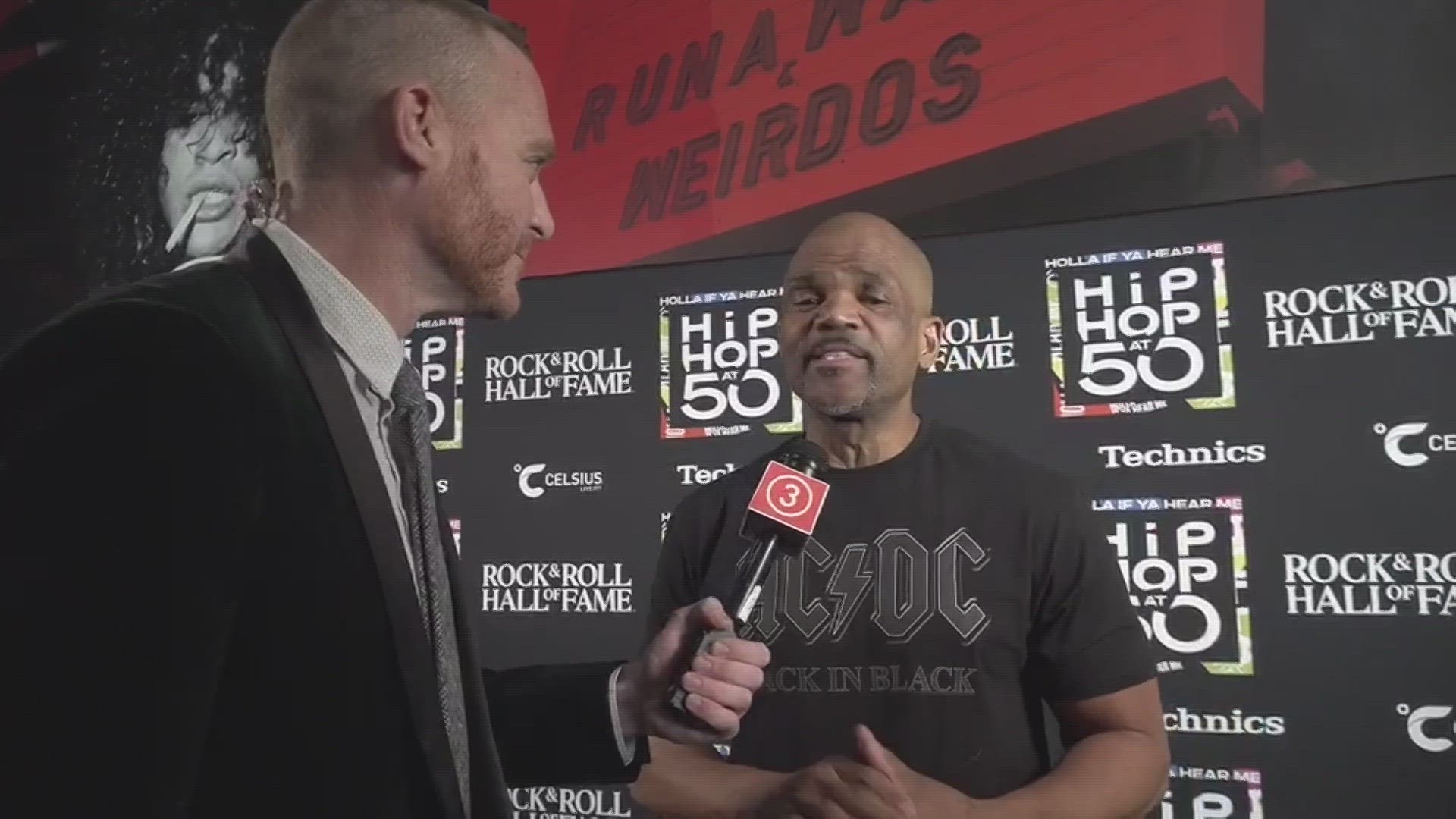CLEVELAND — The Rock and Roll Hall of Fame is celebrating 50 years of hip-hop music with an impressive exhibit highlighting important moments in history of the genre, but how was it determined that the year 1973 was when hip-hop truly began Musical genres are notoriously fluid, particularly at the beginning, so how can we be so precise in this instance?
Like any distinct genre, hip-hop has roots in other forms of music and was shaped by countless different artists. But unlike most others, there is an accepted consensus regarding where and when this genre began.
Hip-hop was born as a music, dance, and art movement in the Bronx in New York City in the early 1970s, and has essentially been steering our popular culture ever since. New York was in bad economic shape during the time, due largely to the decline of the manufacturing industry.
Much of the white middle class moved to the suburbs to escape the social and economic hardship. As a result, many businesses and clubs closed their doors. Those abandoned buildings and parking lots, now very available, became the venues for vibrant block parties that laid the groundwork for hip-hop culture.
Pop culture historians say it was at these gatherings where the four foundational elements that characterize hip-hop first coalesced, those elements being DJing, MCing, B-boying (AKA "breaking"), and visual/graffiti art. In fact, most agree that they have actually pinpointed the precise date when Hip Hop was born.
It was Aug. 11, 1973, in New York City, at a birthday party in the rec room of an apartment building in the west Bronx. The man who presided over that historic gathering was Clive Campbell — better known as DJ Kool Herc, a founding father of hip-hop.
Born in Jamaica, DJ Kool Herc arrived in America when he was 10. He began spinning records at parties while he was a teenager in the early '70s, and his revelation came from observing how the crowds would react to different parts of whatever record he happened to be playing.
Put simply, he noticed that there were certain parts of songs that people wanted to dance to more than others. His innovation was to use two turntables as a way to switch back and forth repeatedly between two copies of the same record, extending the portion that the crowd most wanted to hear.
It might sound like simple logic now, but it was revolutionary at the time.
Throughout the summer of 1973, DJ Kool Herc had been using and refining this "break-beat" style, a style he put on full display on Aug. 11 at that historic birthday party that would begin a grassroots musical revolution. It was a party that took place more than six years before the term "hip-hop" even entered the popular lexicon, because as with most cool new stuff that starts in New York, it took a while before the rest of the world got the message.
It wasn't until The Sugarhill Gang's 1979 single "Rapper's Delight" that the first hip-hop song received mainstream airplay, introducing the genre to a wide audience.
Determining when and where rock 'n' roll began is complicated and hard to pin down — some say Memphis, some say Nashville, and of course, we've got the building here in Cleveland. But defining when and where hip-hop began is far less controversial. In fact, we even have the address: 1520 Sedgwick Ave., Bronx, New York, Aug. 11, 1973.
From its humble beginnings on the street corner, hip-hop would eventually grow into one of the world's most prominent musical genres and cultural influences. It all started 50 years ago this summer, and the beat goes on and on.
Watch Mike's interview with hip-hop legend Darryl McDaniels of Run DMC:


